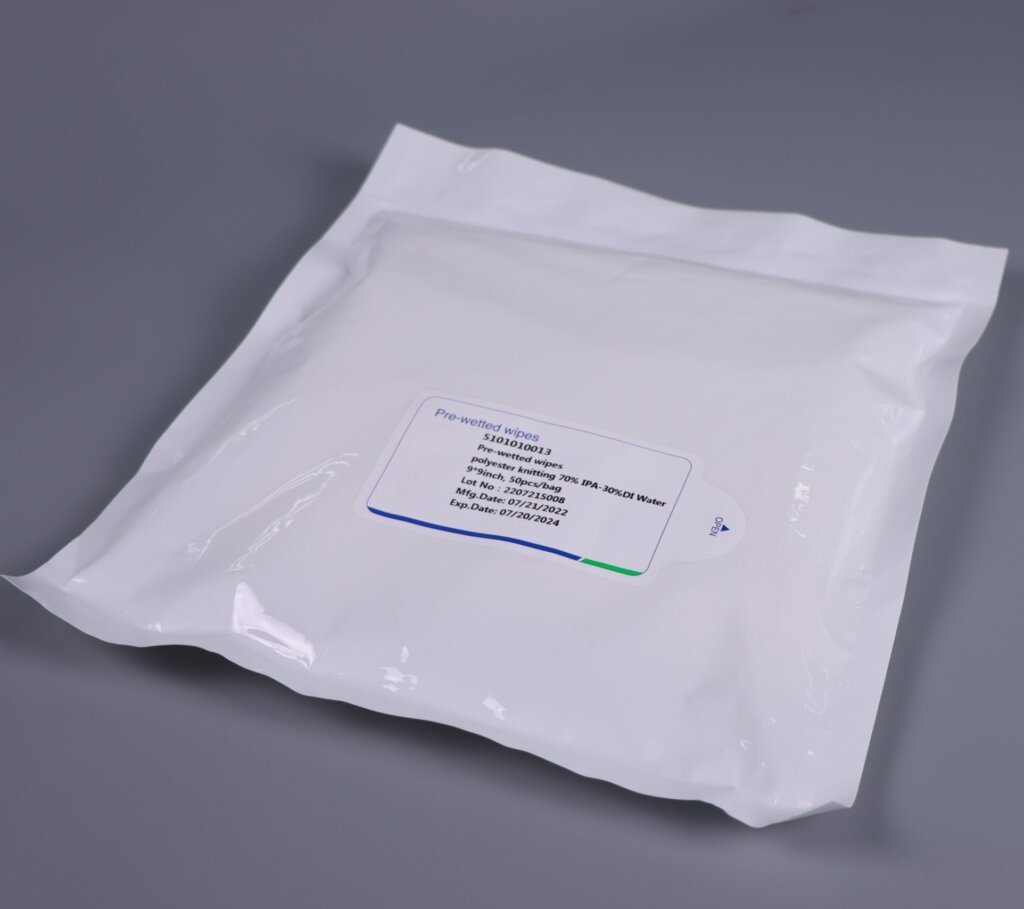In ISO-classified cleanrooms, contamination control is critical to product quality and regulatory compliance. While high-efficiency air filtration removes airborne particles, surfaces and garments remain potential contamination sources. Even microscopic debris tracked in on shoes, carts, or equipment can compromise sensitive manufacturing processes. Cleanroom sticky rollers—specialized adhesive tools designed for particle removal—are widely used as part of preventive maintenance and entry protocols. Their effectiveness lies in their ability to trap debris without dispersing it, making them essential in semiconductor fabrication, pharmaceutical manufacturing, and other contamination-sensitive industries.
What Is a Cleanroom Sticky Roller
A cleanroom sticky roller is a cylindrical device composed of multiple adhesive-coated sheets made from low-lint polyethylene (PE) or polypropylene (PP) film. Each sheet is layered on a core and designed to be peeled off after use, revealing a clean adhesive surface. The roller can be handheld, mounted on an extendable handle for floors and walls, or integrated into automated cleaning systems.
Key structural features:
-
Film material: PE or PP, ISO Class 3–8 compatible, with minimal particle shedding.
-
Adhesive: Low-residue, cleanroom-grade acrylic or synthetic rubber adhesive.
-
Core: Anti-static or conductive core for ESD-safe applications.
-
Size range: Typically 4″–18″ widths for manual rollers; larger for floor systems.
How a Cleanroom Sticky Roller Works
Sticky rollers remove contaminants through direct adhesive capture. When rolled over a surface, particles such as dust, fibers, or hair adhere to the tacky layer. The tack level is matched to the application:
-
Low tack: For delicate surfaces, e.g., coated panels, glass lenses.
-
Medium tack: For general cleanroom floors and walls.
-
High tack: For textured or heavily soiled surfaces.
The roller’s adhesive strength is engineered to pick up particles without transferring residue. Each used sheet is peeled off in one motion, instantly restoring cleaning efficiency while preventing particle re-release.
Performance Comparison
| Feature | Cleanroom Sticky Rollers | Standard Adhesive Rollers |
|---|---|---|
| Particle shedding | ISO Class 3–8 compliant, low-lint | May shed fibers, not ISO-rated |
| Adhesive residue | Low-residue, cleanroom-tested | May leave adhesive traces |
| ESD safety | Available in ESD-safe designs | Rarely ESD-protected |
| Tack levels | Multiple options (low–high) | Usually single tack level |
| Surface compatibility | Floors, walls, garments, equipment | Limited to fabric/lint removal |
Applications in Industry
1. Semiconductor and Microelectronics
In wafer fabrication, even submicron particles can cause circuit defects. Sticky rollers are used on floors, walls, and equipment surfaces to prevent particle migration toward critical photolithography and etching zones. ESD-safe rollers are preferred to avoid electrostatic discharge damage.
2. Pharmaceutical and Biotechnology
Before batch production, operators use sticky rollers to clean floors, filling line surfaces, and packaging areas. This minimizes the risk of particulate contamination in sterile drug manufacturing, ensuring compliance with GMP standards.
3. Aerospace and Optics
In assembling optical sensors or aerospace components, dust can affect calibration and performance. Sticky rollers are used in clean assembly rooms and inspection areas to maintain optical clarity and precision.
4. Medical Device Manufacturing
Sticky rollers clean assembly benches and packaging areas to protect implantable devices and diagnostic equipment from contamination.
Selection Guidelines
Choosing the correct cleanroom sticky roller involves evaluating:
-
Cleanroom classification: Ensure material and adhesive meet ISO particle emission requirements.
-
Tack level: Match adhesive strength to the surface type and contamination load.
-
ESD safety: Select conductive or dissipative cores for electronics manufacturing.
-
Roller size: Narrow rollers for benches and equipment; wide rollers for floors and large walls.
-
Sheet thickness and durability: Thicker sheets resist tearing during use.
Usage Best Practices
-
Always start cleaning from the cleanest area and move toward higher-risk zones to prevent contamination spread.
-
Replace adhesive sheets as soon as tackiness decreases or visible debris accumulates.
-
Store rollers in sealed, clean containers to prevent pre-use contamination.
-
Integrate roller cleaning into Standard Operating Procedures (SOPs) and train staff in proper technique.
-
For garment decontamination, roll in downward strokes from shoulders to feet to ensure particle capture.
Conclusion
Cleanroom sticky rollers are a cost-effective and versatile tool for maintaining particle control in contamination-sensitive environments. By selecting the correct tack level, material, and size—and integrating them into regular cleaning protocols—facilities can reduce product defects, maintain ISO and GMP compliance, and protect high-value manufacturing processes.




-4.jpg)